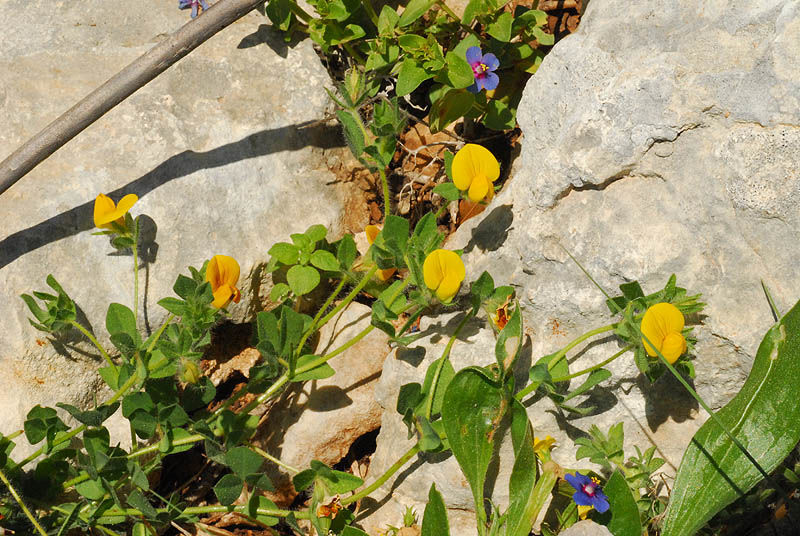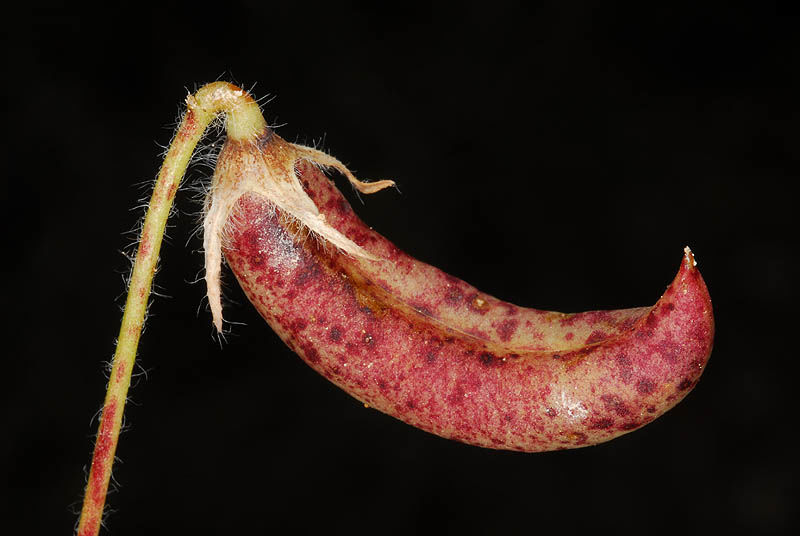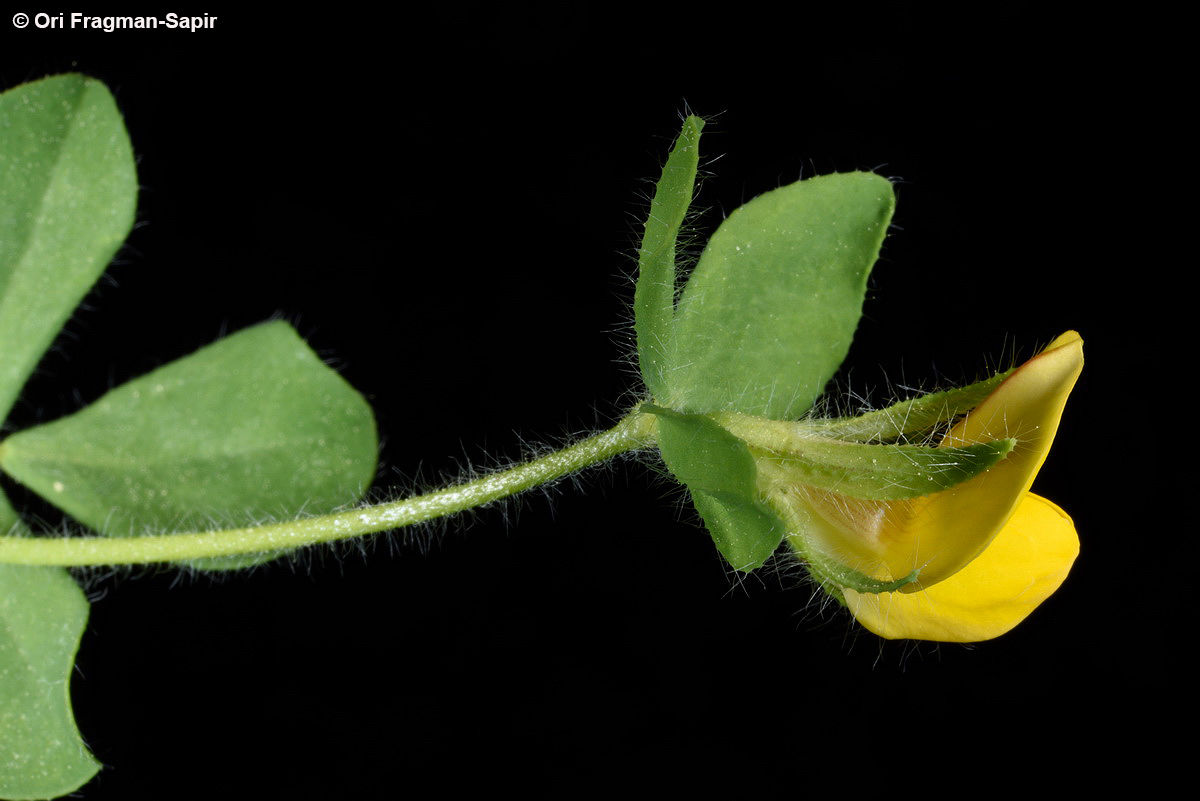Alfilaria
lotus edulis
Also known as: ["Alfilaria","Bird's-foot Trefoil"]
Overview
A small, herbaceous plant in the pea family, known for its yellow flowers and edible seeds.
Benefits & Perks
["edible fruits","wildlife attractant (bees, butterflies, birds)","drought tolerant"]
Botanical Classification
| Phylum: | Magnoliophyta |
| Class: | Magnoliopsida |
| Order: | Fabales |
| Family: | Fabaceae |
| Genus: | Lotus |
| Botanical Name: | Lotus edulis |
Plant Characteristics
Basic Information
- Category: Herbs & Weeds
- Suitable Location: raised beds or containers in sunny, sheltered spots
- Suitable For:
- Is Weed: No
- Allergenicity: low
Environmental Needs
- Climate: {"temperatureRange":"10–30°C"}
- Hardiness: {"zones":"9–11"}
- Misting: rarely required, only if ambient humidity is very low
- Drainage: Fast-draining to prevent waterlogging.
- Soil Type: Well-draining, loamy soil with added organic matter.
Maintenance Level
- Maintenance Level: low
- Toughness Level: moderate
- Pruning Frequency: As needed, typically in spring or after flowering.
- Pruning Intensity: Light to moderate; avoid heavy pruning unless necessary.
Care Details
Ideal Sunlight Coverage:
Full sun (6–8 hours/day); partial shade in intense summer heat.
Sunlight Tolerance Tips:
Acclimate gradually to intense sunlight; protect from harsh midday sun; adjust placement based on outdoor/indoor conditions.
Care Requirements
Care Difficulty
easymoderate
Sunlight
full sun to partial shade
Rotate plant for even light exposure; use sheer curtains to filter intense sun; avoid direct afternoon sun in summer.
Watering
every 7–10 days during active growth, reduce in winter
Water thoroughly but infrequently; ensure proper drainage; avoid waterlogging.
Soil
well-draining, sandy loam with some organic matter
pH: Slightly acidic to neutral (pH 6.0–7.0).
Use a mix of potting soil and perlite; avoid heavy clay soils; ensure pots have drainage holes.
Temperature
Prefers 65–85°F (18–29°C); tolerates mild frosts but thrives in warm conditions.
Protect from frost; provide shade in summer; maintain consistent warmth.
Fertilizing
every 4–6 weeks during growing season with balanced liquid fertilizer
Fertilize after watering to prevent root burn; switch to low-nitrogen formula for flowering plants; flush soil occasionally to prevent salt buildup.
Propagation
Methods
Division of rhizomes or stem cuttings.
Step-by-Step Propagation Guide
- Select healthy rhizome or stem, prepare medium, apply hormone (if used), plant, maintain humidity, monitor for roots.
Best Time: Spring or early summer when growth is active.
Environment
Warm, humid, and bright but indirect light.
Medium
Well-draining potting mix with perlite or sand.
Hormone
Optional, but can help with root initiation.
Timeline
Roots may form in 3–6 weeks; new growth in 2–4 months.
Tools Needed
Sharp knife, rooting hormone, pots, well-draining mix.
Quick Tips
Use clean tools to prevent disease; maintain consistent moisture; provide bottom heat for faster rooting.
Pruning & Repotting
Pruning Guide
Method
Cut back yellowing or dead stems to the base; shape as needed.
Pruning Plan
Remove dead or damaged foliage to encourage new growth and maintain shape.
Tools
Pruning shears, sterilized knife.
Checklist
Sterilize tools, cut dead/damaged parts, shape plant, clean up debris.
Repotting Guide
Best Season
Spring, before new growth begins.
Pot Size
Increase pot size by 2–3 inches in diameter.
Method
Remove plant gently, trim roots if needed, use fresh soil, ensure good drainage, water lightly after repotting.
Suggestions
Repot every 2–3 years or when roots fill the pot; beneficial for growth and health.
Checklist
Check root bound status, prepare new pot, trim roots, add fresh soil, water lightly, place in appropriate light.
Advanced Care Tips
Watering Mastery
Watering Checklist
Check soil moisture, water deeply, ensure drainage, adjust for season.
How to Apply Water Properly
Water at the base of the plant, ensuring moisture reaches the root zone; allow excess water to drain away; water in the morning to reduce evaporation.
Watering Schedule Tips
Water deeply once the soil surface feels dry to the touch; reduce frequency in winter to prevent root rot.
Soil Improvement
Add perlite or sand for drainage; incorporate compost for fertility; ensure aeration with coarse materials.
Temperature Stress Management
Signs of Temperature Issues
Wilting, yellowing leaves, stunted growth, or bud drop.
Cold Stress
Slows growth, may cause leaf damage or dieback in prolonged cold.
Solution: Move to a warmer location; provide frost protection; reduce watering in cold periods.
Hot Stress
Leaf scorch, wilting, or reduced flowering in extreme heat.
Solution: Provide shade during peak heat; increase humidity; water more frequently but avoid waterlogging.
Fertilizing Guide
Fertilizing Checklist
Check season, dilute fertilizer, apply to soil, avoid foliage contact, flush periodically.
Fertilizing Method
Use balanced liquid fertilizer diluted to half strength every 4–6 weeks during growing season; avoid fertilizing in winter.
Common Problems & Solutions
Toxicity Warning
Cats
Non-toxicLotus edulis is not considered toxic to cats. The plant lacks compounds that are harmful to felines. Ingestion of the plant may cause mild gastrointestinal upset if consumed in large quantities, but it is not inherently toxic.
⚠️ Symptoms:
🌿 Toxic Parts:
⚡ Toxic If:
if eaten
Dogs
Non-toxicLotus edulis is not considered toxic to dogs. The plant does not contain any known substances that are harmful to canines. However, ingestion of large quantities may cause mild gastrointestinal upset due to the plant's fibrous nature.
⚠️ Symptoms:
🌿 Toxic Parts:
⚡ Toxic If:
if eaten
Humans
Non-toxicLotus edulis, commonly known as the lotus bean or Egyptian bean, is generally considered non-toxic. However, excessive consumption of its seeds may lead to mild gastrointestinal discomfort due to their high fiber content. The plant is not known to produce any significant toxic compounds.
⚠️ Symptoms:
🌿 Toxic Parts:
⚡ Toxic If:
if eaten in excessive quantities
Frequently Asked Questions
Q: Is Lotus edulis edible?
A: Yes, the seeds of Lotus edulis are edible and can be consumed.
Q: Does Lotus edulis attract wildlife?
A: Yes, it attracts bees, butterflies, and birds due to its flowers.
Q: Is Lotus edulis toxic to pets?
A: No, Lotus edulis is non-toxic to dogs and cats.
Quick Reference
| Family: | Fabaceae |
| Care: | easy |
| Light: | full sun to partial shade |
| Water: | every 7–10 days during activ |
Get Expert Care Tips
Download the Plantious app for personalized care reminders and plant identification!
Google Play App Store








